
Patient Information
First Visit
Welcome to our office. We look forward to meeting you and talking with you about your orthodontic concerns. We have set aside special time for you to evaluate your orthodontic needs, expectations and to answer your questions concerning orthodontic care.
There is no charge for this initial appointment. Please allow approximately one hour for your initial visit to our office. In addition to a thorough clinical evaluation, Dr. Foster will utilize digital imaging to aid in our discussion of your orthodontic concerns, treatment recommendations and the best time to get started. Time permitting, records technicians are available to gather additional diagnostic records so we may proceed in meeting your treatment goals.
Your questions regarding the financial aspects of your care will also be discussed. The fees for orthodontic care will vary based upon one’s individual needs. We offer a variety of payment options and will be glad to assist in submission of insurance claims.
For your convenience you can print your forms at home, fill them out and bring them to your first visits.

Common Problems
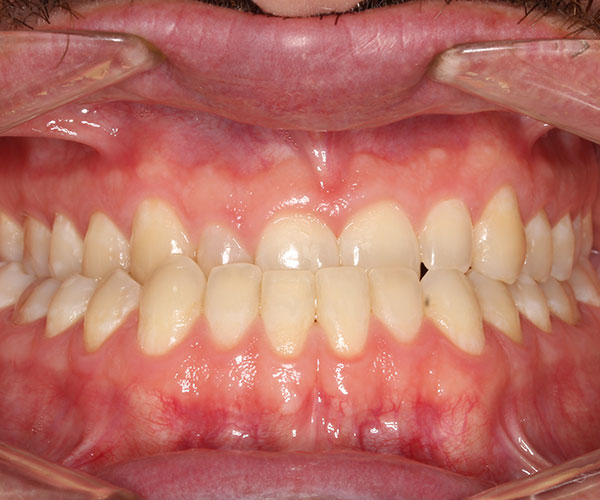
Underbite
An underbite is characterized by the lower jaw extending out, causing the lower front teeth to sit in front of the upper front teeth.

Spacing
Spacing problems may be caused by missing teeth, or they may only be a cosmetic or aesthetic issue.
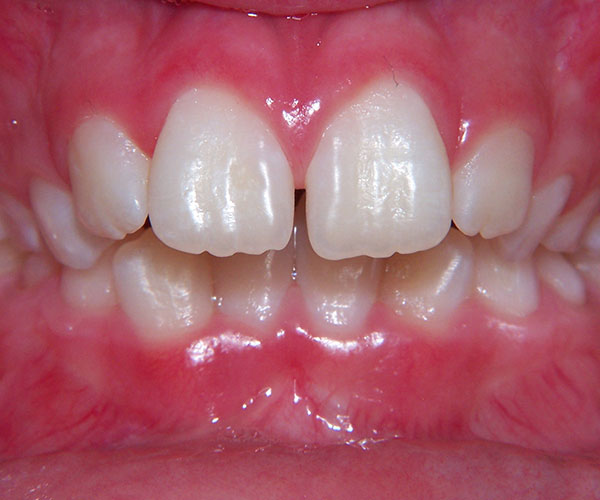
Upper Front Teeth Protrusion
The appearance and function of your teeth are impacted by this type of bite. It is characterized by the upper teeth extending too far forward or the lower teeth not extending far enough forward.
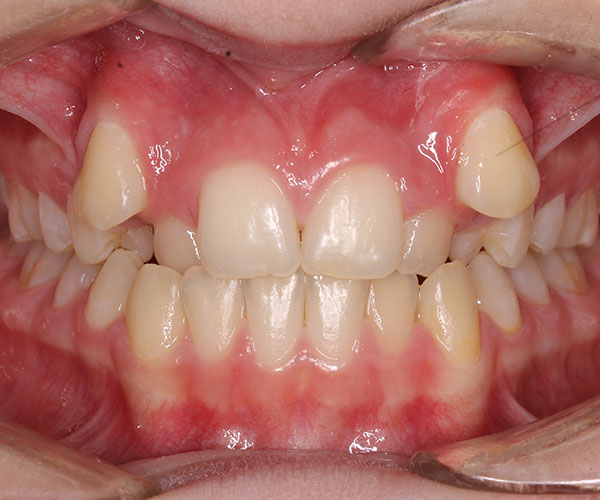
Crowding
Crowding occurs when teeth have insufficient room to erupt from the gum. Crowding can often be corrected by expansion, and many times, tooth removal can be avoided.
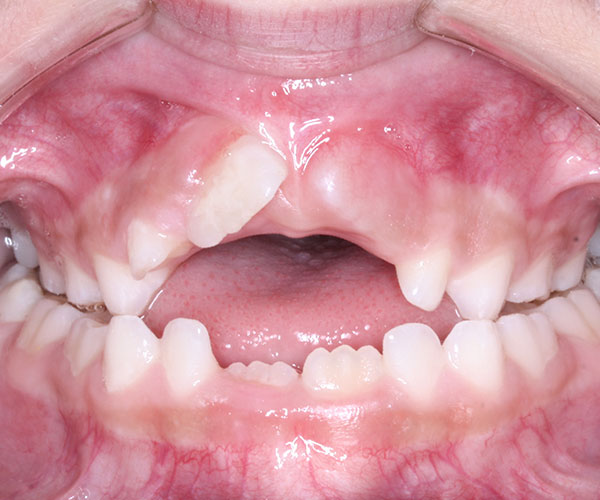
Crossbite
The upper teeth sit inside the lower teeth, which may cause tooth stratification and misaligned jaw growth.
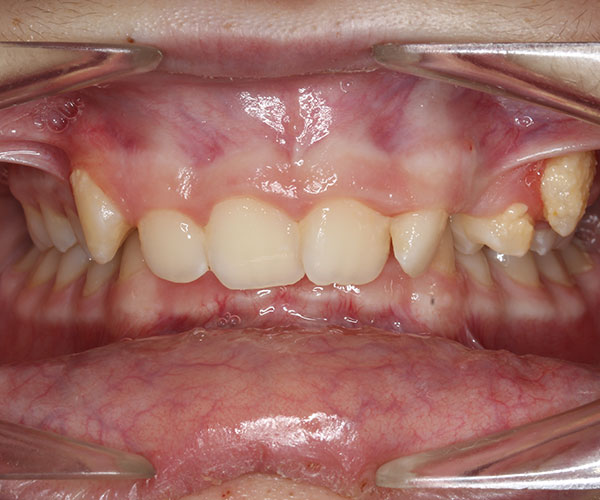
Overbite
The upper front teeth extend out over the lower front teeth, sometimes causing the lower front teeth to bite into the roof of the mouth.
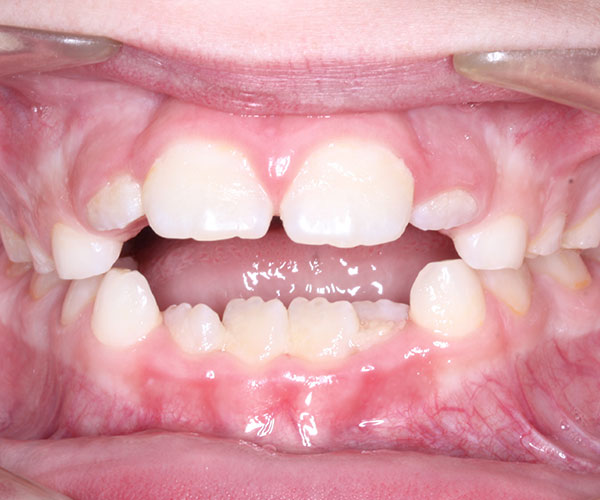
Openbite
Proper chewing is impacted by this type of bite, in which the upper and lower front teeth do not overlap. Openbite may cause a number of unwanted habits, such as tongue thrusting.
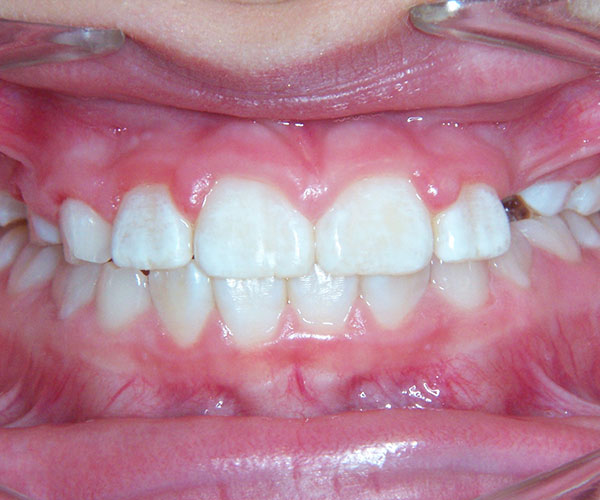
Dental Midlines not Matched
This type of problem is caused when the back bite does not fit and match appropriately, which may negatively impact jaw and proper dental function.
Oral Hygiene
Interdental Toothbrush
A Proxabrush is an interdental (between the teeth) toothbrush that you may use to clean underneath and around your wires and braces. Use the Proxabrush gently to avoid damaging your wires. The Proxabrush will help you to clean your braces while maintaining healthy teeth and gums.
Antibacterial Mouthwash
Peroxyl, a hydrogen peroxide antiseptic mouth rinse, will reduce inflammation to your gums and cheeks. Peroxyl helps to prevent infection and decrease irritation that may develop from your braces. Rinse your mouth with two teaspoons of Peroxyl (half a capful) for one minute and then spit it out. You may use Peroxyl up to four times daily following your schedule for brushing: after meals (or after school) and before bed. Just like using peroxide for a scrape on your skin, Peroxyl helps the inside of your mouth heal. Peroxyl can be used for general irritation caused by your braces or for canker sores, cheek bites and other minor temporary injuries to the gums.
Topical Fluoride
Phos-Flur is a sodium fluoride gel that helps prevent tooth decay while you are wearing braces by killing bacteria and replacing minerals in tooth enamel that have been exposed to harmful acids. The use of Phos-Flur does not replace daily brushing and flossing but should be done following your daily schedule at bedtime. Place a small strip of Phos-Flur on a toothbrush and apply it to your teeth for one minute and spit it out. You may not eat or drink for 30 minutes after you use Phos-Flur. It is important for the active ingredient to stay on your teeth for 30 minutes, so do not wash it away by eating or drinking.
Cleaning Your Removable Appliance
Brush your removable appliance every day as a part of your regular brushing and flossing schedule. Because food particles and plaque can accumulate on your appliance just as they do on your teeth, soak the appliance daily. Dissolve a Polident, Efferdent or other denture-cleaning tablet in a glass of tap water at room temperature and soak your appliance once every day. Your appliance will taste better, and you will prevent plaque and bacterial accumulation.
What to Do in Case of Emergency
Call our office as soon as possible if you break or loosen any of your appliances. Please do not come directly to the office – by calling us, you will allow us to create a time to see you. Even if you have a regular appointment scheduled, call us immediately to notify us if you need an appliance repaired.
Loose Brackets or Bands
Call our office immediately for advice if a bracket or wire is loosened. The bracket may need to be re-fitted as soon as possible. You may have a situation that requires cutting a wire or sliding a bracket off a wire at night or over the weekend. If you need to cut a wire in case of emergency, you may use fingernail clippers that have been washed and sterilized in alcohol. Please call our office the next business day, so that we may schedule an appointment for you.
Wire Irritations
Sometimes discomfort caused by a wire on your braces can be resolved by moving the wire away from the irritated area with a cotton swab or eraser. If the wire will not move, try covering the end of it with a small piece of cotton or a small amount of wax. If the wire is painful, you can cut it with nail clippers or scissors that have been washed and sterilized in alcohol. If you cannot resolve the wire irritation, call our office for an appointment.
Lost Separators
Most patients lose a separator during their treatment. Do not worry about losing a separator, but call our office to see if it needs to be replaced.
Discomfort with Orthodontic Treatment
During the first week after your braces are in place and routine adjustments are complete, you will likely feel some pain, soreness or discomfort. You may take acetaminophen or other non-aspirin pain relievers while you adjust to your new braces. A warm wash cloth or heating pad may reduce the soreness in your jaws.
Parts of Braces
Bands
Bands are a ring of metal, which fit around the molars and sometimes premolars. The bands are selected from a range of sizes in order to find the tightest fitting band. The bands are sealed in position using dental cement that contains fluoride to prevent any decalcification during treatment.
Brackets
The brackets hold the archwire against each tooth. The archwire fits into a slot in the bracket. Brackets may be attached directly to each tooth or to a band.
Archwire
The main wires or archwires, are shaped specifically to fit around the arch into the bracket slots. Teeth move from the pressure that is applied by the braces. That pressure comes from the archwire, which guides the direction of the movement.
Elastics
An elastic is the tiny rubber ring that ties the archwire into the bracket.
Hooks
Hooks are small attachments on the brackets used to attach elastics (rubber bands).
Coil Spring
The coil spring fits between brackets and over the archwire.
Frequently Asked Questions
Q. Is it required that I be referred by my family dentist to schedule an appointment?
A. No, it is not. Many of our patients are referred by their family dentist, however many patients are concerned about their health and appearance, and take the initiative to schedule themselves for an examination to have their need for orthodontic care evaluated.
Q. At what age should I schedule an appointment for an orthodontic screening?
A. The American Association of Orthodontists recommends an orthodontic screening at age 7. By this age, the six-year molars and several permanent teeth in most children have erupted allowing the doctors to effectively evaluate most developing orthodontic problems.
Q. Will my child’s teeth straighten out on their own as they grow?
A. No, they will not. The space available for the front teeth does not increase as a child grows. In most people, after the permanent 6-year molars erupt, the space available for the front teeth decreases with age.
Q. How do I schedule an appointment for an initial exam?
A. If you think you or your child would benefit from orthodontic treatment, simply call our office and we will be happy to schedule an appointment for you. When you call to schedule your appointment, our front office staff will request some basic information concerning you and your child.
Q. Is there a cost for the initial examination?
A. No, there is no cost for the initial examination. We believe that the relationship established during a patient’s first visit is much more important than an “office visit” charge.
Q. What will happen at the initial examination?
A. Upon arriving each patient and parent will be seen by one of our Treatment Coordinators who will acclimate you to our clinic and prepare for the initial exam. Necessary photographs and x-rays will be taken to allow the orthodontist to make a proper diagnosis.
Q. What will I learn from the initial examination?
A. There are five important questions that we will cover during the initial examination:
- Is there an orthodontic problem, and if so, what is it?
- What must be done to correct the problem?
- Will any teeth need to be removed?
- How long will the treatment take to complete?
- How much will the treatment cost?
In addition to these, Dr. Foster will take the time to answer any other questions a patient or parent may have.
Q. Will I have to have any teeth removed for braces?
A. Removing teeth is sometimes needed to get the best orthodontic result. Straight teeth and a balanced facial profile are always the goal. However, because today’s technology has resulted in advanced orthodontic procedures, the need for removing teeth has been greatly reduced.
Q. How long will it take to complete treatment?
A. Treatment time obviously depends on each patient’s specific orthodontic problem. In general, treatment times range from 12 to 30 months. The “average” time frame a person is in braces is approximately 22 months.
Q. How much will braces cost? Are financing options available? How does my insurance work?
A. It is impossible to give an exact cost for treatment until the doctor has actually examined you or your child. The exact cost and financial options will be discussed at the initial examination. We have many financing options available to meet most needs and we will be happy to review them with you. We file insurance on the patient’s behalf, and also offer a discount for fees paid in full at the beginning of treatment. Proper orthodontic treatment to correct a problem is often less costly than the additional dental care required to treat the more serious problems that can develop in later years.
Q. How often will I have appointments?
A. Appointments are scheduled according to each individual patient’s needs. Most patients in braces will be seen every 4 to 8 weeks. If there are specific situations that require more frequent monitoring, appointments will be scheduled accordingly.
Q. Can I have all of my appointments after school?
A. Unfortunately, we cannot schedule all appointments for students during after-school hours. However, because most appointments are scheduled 4 to 8 weeks apart, most patients will miss very little school due to their orthodontic treatments. We reference all area school calendars, and try very hard to meet the scheduling needs of our patients.
Q. Can I drop my child off for an appointment?
A. We are very understanding of busy schedules and working parents’ desires to run errands while their child is at our office. On some occasions, the doctors may want to speak with parents when they return, so we request that parents check in with their patient manager before dropping off their child.
Q. Do braces hurt?
A. Generally, braces do not “hurt.” After some visits, teeth may be sore for a few days. In these situations, pain medications such as Advil or Tylenol can be used to ease the discomfort. However, after most visits, patients do not feel any soreness at all! We often remind our patients, it does not have to hurt to work!
Q. Can I return to school the day I receive my braces?
A. Yes. There is no reason to miss school because of an orthodontic appointment.
Q. Do you give shots?
A. No. Shots are not necessary in orthodontic treatment.
Q. Do you use recycled braces?
A. Absolutely not! It is our belief that each patient should be provided with their own braces to achieve the best orthodontic result possible. Our doctors have never and will never use worn, used or recycled braces.
Q. Can I still play sports?
A. Yes. We can recommend a mouth guard for all sports. Custom made mouth guards are available upon request.
Q. Do I need to see my family dentist while in braces?
A. Yes! Regular checkups with your family dentist are important while in braces. Your family dentist will determine how often you should be seen for cleaning appointments while you are in braces.
Q. Are there foods I cannot eat while I have braces?
A. Yes. Once treatment begins, very complete instructions and a comprehensive list will be provided regarding foods to avoid. Some of those foods include: ice, hard candy, raw vegetables and all sticky foods (i.e. caramel and taffy). Many emergency appointments to repair broken or damaged braces can be avoided by carefully following instructions regarding what foods to avoid.
Q. How often should I brush my teeth while in braces?
A. Patients should brush their teeth at least four times each day: after breakfast, lunch (or as soon as they get home from school), supper, and before going to bed. We will show each patient how to floss their teeth with braces on, and will also provide a prescription for a special fluoride gel to help protect teeth.
Q. What is an emergency appointment? How are those handled?
A. If something happens and your braces are causing pain or if something is broken, you should call our office. In most cases we can address these issues over the telephone. If an emergency appointment is needed, daily time is available for timely attention.
Q. Can orthodontic correction occur while a child has baby teeth?
A. Yes. Some orthodontic problems are significant enough to require early intervention. However, if a patient is not yet ready for treatment, we will follow that patient’s growth and development until the time is right for treatment to begin.
Q. What is Phase One (early) Treatment?
A. Phase One treatment, when needed, is usually initiated on children between the ages of seven and 10. Phase One treatment usually takes about 12 months. There are several primary objectives for Phase One treatment:
- To address significant problems early to prevent them from becoming severe corrections later.
- To develop jaws for crowding concerns and modify jaw growth for an improved jaw relationship.
- Finally, to improve self-esteem and self-image, both very important during their formative years.
Q. Will my child need full braces if he/she has Phase One treatment?
A. It is best to assume that your child will need full braces even after Phase One treatment. The period of time following Phase One treatment is called the “resting period,” during which growth and tooth eruption are closely monitored. Throughout this period, parents and patients will be kept informed as to any future treatment recommendations.
Q. Will my child need an expander?
A. At the completion of the initial examination, the doctor will determine whether a patient will need an expander or not.
Q. Is it too late to have braces if I am already an adult?
A. A surprising percentage of our patients are adults. Health, happiness and self-esteem are vitally important to adults. No patient is “too old” to wear braces!
Q. Can I wear braces even though I have crowns and missing teeth?
A. Yes. A tooth with a crown will move just like a tooth with a simple filling. When teeth are missing, orthodontic treatment will aid in the alignment of the remaining teeth so that the space where the teeth are missing can be properly restored.
Q. Why should I choose an orthodontic specialist?
A. Teeth, and sometimes entire facial structures, are permanently changed by orthodontic treatment. It is very important that the treatment be appropriate and properly completed. Orthodontic specialists, like Dr. Foster, have extensive and specialized training that enables them to provide all types of orthodontic patients with professional and state of the art treatments.
